
Filter News
Area of Research
- Advanced Manufacturing (3)
- Biology and Environment (16)
- Computational Biology (1)
- Electricity and Smart Grid (1)
- Energy Science (59)
- Fusion and Fission (6)
- Fusion Energy (1)
- Isotopes (2)
- Materials (36)
- Materials for Computing (4)
- National Security (13)
- Neutron Science (14)
- Nuclear Science and Technology (5)
- Supercomputing (31)
News Type
News Topics
- (-) 3-D Printing/Advanced Manufacturing (56)
- (-) Advanced Reactors (12)
- (-) Artificial Intelligence (77)
- (-) Clean Water (16)
- (-) Grid (32)
- (-) Materials (51)
- (-) Mercury (7)
- (-) Polymers (9)
- (-) Security (16)
- (-) Transportation (30)
- Big Data (45)
- Bioenergy (68)
- Biology (80)
- Biomedical (42)
- Biotechnology (25)
- Buildings (30)
- Chemical Sciences (35)
- Composites (11)
- Computer Science (111)
- Coronavirus (19)
- Critical Materials (5)
- Cybersecurity (14)
- Education (2)
- Emergency (3)
- Energy Storage (32)
- Environment (116)
- Exascale Computing (51)
- Fossil Energy (6)
- Frontier (44)
- Fusion (38)
- High-Performance Computing (81)
- Hydropower (6)
- Isotopes (33)
- ITER (4)
- Machine Learning (37)
- Materials Science (55)
- Mathematics (8)
- Microelectronics (3)
- Microscopy (23)
- Molten Salt (2)
- Nanotechnology (17)
- National Security (60)
- Neutron Science (82)
- Nuclear Energy (66)
- Partnerships (36)
- Physics (34)
- Quantum Computing (35)
- Quantum Science (48)
- Simulation (42)
- Software (1)
- Space Exploration (13)
- Statistics (2)
- Summit (40)
Media Contacts
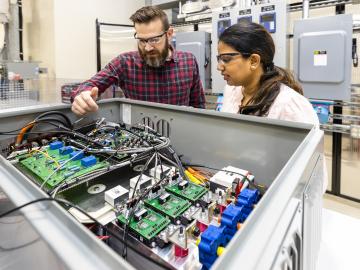
Researchers at ORNL are helping modernize power management and enhance reliability in an increasingly complex electric grid.

Chemist Jeff Foster is looking for ways to control sequencing in polymers that could result in designer molecules to benefit a variety of industries, including medicine and energy.
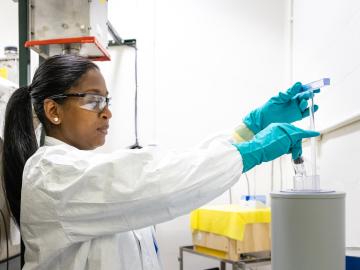
A series of new classes at Pellissippi State Community College will offer students a new career path — and a national laboratory a pipeline of workers who have the skills needed for its own rapidly growing programs.
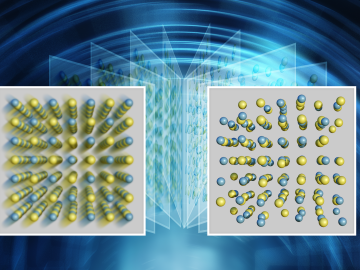
Scientists have long sought to better understand the “local structure” of materials, meaning the arrangement and activities of the neighboring particles around each atom. In crystals, which are used in electronics and many other applications, most of the atoms form highly ordered lattice patterns that repeat. But not all atoms conform to the pattern.
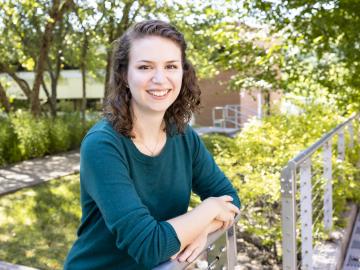
Alice Perrin is passionate about scientific research, but also beans — as in legumes.
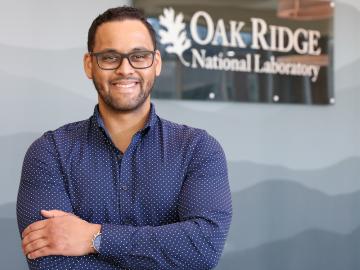
When Addis Fuhr was growing up in Bakersfield, California, he enjoyed visiting the mall to gaze at crystals and rocks in the gem store.

The word “exotic” may not spark thoughts of uranium, but Tyler Spano’s investigations of exotic phases of uranium are bringing new knowledge to the nuclear nonproliferation industry.

The U.S. Departments of Energy and Defense teamed up to create a series of weld filler materials that could dramatically improve high-strength steel repair in vehicles, bridges and pipelines.

Scientists have measured the highest toughness ever recorded, of any material, while investigating a metallic alloy made of chromium, cobalt and nickel, or CrCoNi.
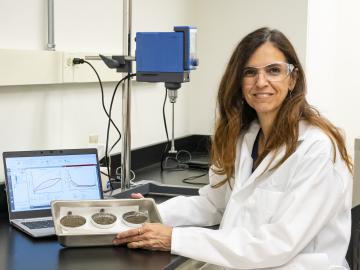
Materials scientist Denise Antunes da Silva researches ways to reduce concrete’s embodied carbon in the Sustainable Building Materials Laboratory at ORNL, a research space dedicated to studying environmentally friendly building materials. Credit: ORNL, U.S. Dept. of Energy


